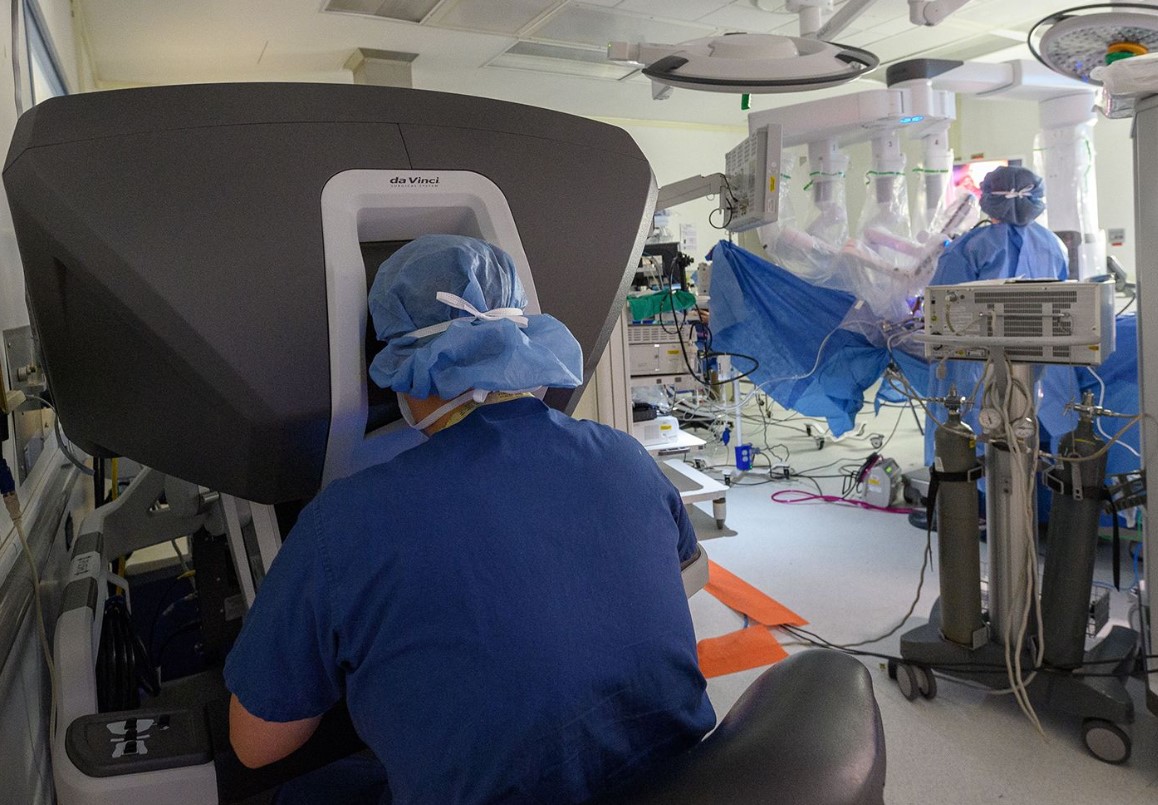Is Robotic Surgery Safer Than Traditional Surgery
In the field of urology, advancements in technology have led to significant improvements in surgical procedures. One of the most revolutionary innovations is robotic surgery, a minimally invasive technique that has become increasingly popular, especially for urological needs such as prostate, kidney, and bladder surgeries. But how does robotic surgery compare to traditional surgery in terms of safety and effectiveness? Dr. Dushyant Nadar, the best robotic urology surgeon in Noida, explains the advantages and potential risks of both methods, shedding light on why robotic surgery might be the safer option for many patients.
Understanding Robotic Surgery
Robotic surgery, also known as robotic-assisted surgery, uses advanced robotic systems controlled by a highly skilled surgeon. The surgeon sits at a console and manipulates robotic arms equipped with tiny surgical instruments. The system provides a high-definition, magnified, and 3D view of the surgical area, allowing the surgeon to make precise movements.
In urology, robotic surgery is commonly used for procedures like radical prostatectomy, partial nephrectomy, and reconstructive surgeries. Its precision is particularly beneficial in these delicate operations, where even a minor mistake could lead to complications.
The Benefits of Robotic Surgery Over Traditional Surgery
- Increased Precision Robotic surgery offers unmatched precision. The surgeon controls the robotic arms, which can move with a greater range of motion and stability than human hands. This precision is especially important in urological surgeries, where delicate structures such as nerves and blood vessels must be preserved to avoid complications like incontinence or erectile dysfunction in prostate surgeries.
- Minimally Invasive Unlike traditional surgery, which often requires large incisions, robotic surgery is minimally invasive. It uses small incisions, reducing the risk of infection, blood loss, and post-operative pain. For urological procedures, this means patients experience shorter hospital stays, faster recovery times, and less scarring.
- Better Visualization The robotic system provides a magnified, 3D view of the surgical area, giving the surgeon a much clearer view than traditional open surgery. This enhanced visualization allows for better identification and preservation of critical structures, making robotic surgery safer for complex urological procedures.
- Lower Risk of Complications Dr. Dushyant Nadar, a leading expert in robotic urology surgery in Noida, points out that the enhanced precision and minimally invasive nature of robotic surgery often result in fewer complications. Patients undergoing robotic-assisted procedures tend to have a lower risk of infection, less blood loss, and quicker recovery times compared to those who undergo traditional open surgery.
Comparing Traditional and Robotic Surgery: Risks and Considerations
While robotic surgery has many advantages, it’s important to understand that no surgical technique is without risks. Traditional surgery is a tried-and-tested method that has been used successfully for decades. However, it usually involves larger incisions, which can lead to more post-operative pain, longer recovery times, and a higher risk of complications.
In contrast, robotic surgery has fewer risks associated with wound infections and post-operative complications. However, the safety and success of robotic surgery depend heavily on the surgeon’s experience and the complexity of the procedure. Dr. Dushyant Nadar emphasizes that robotic surgery is not suitable for all patients or all types of surgeries. In some cases, traditional surgery may be the better option, particularly for patients with complex conditions or those who require more extensive procedures.
Is Robotic Surgery Safer?
In terms of urological needs, robotic surgery is often considered safer than traditional surgery due to its precision, minimally invasive nature, and reduced risk of complications. The advanced technology allows surgeons to perform delicate procedures with greater accuracy, leading to better outcomes and faster recovery for patients.
Dr. Dushyant Nadar, the best robotic urology surgeon in Noida, has successfully performed numerous robotic-assisted surgeries, offering patients improved safety, quicker recovery, and better long-term results. However, he stresses that the choice between robotic and traditional surgery should be made based on the individual patient’s condition, the complexity of the surgery, and the surgeon’s expertise.
Conclusion
For many urological procedures, robotic surgery offers a safer, more precise alternative to traditional surgery. With fewer complications, quicker recovery times, and smaller incisions, robotic surgery is revolutionizing the way urological conditions are treated. Under the expert guidance of Dr. Dushyant Nadar, patients in Noida can experience the benefits of this cutting-edge technology and achieve better outcomes for their urological health.


Comments are closed